Features of machines for the production of fuel briquettes
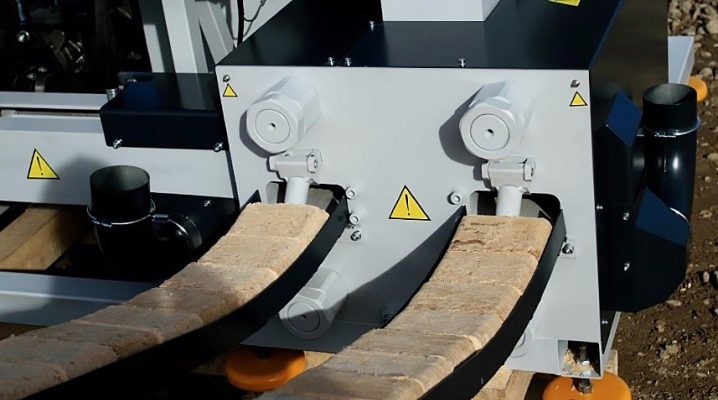
A fairly large number of so-called alternative fuels have appeared on the market these days. One of them can be called fuel briquettes, which gained popularity in a relatively short time. Their production can be organized in small shops, as well as in large industries as an additional source of income. They are usually made in wood processing enterprises and those where sawdust is formed during the creation of products. Recycling of this nature will be an excellent solution both from an environmental and financial point of view. Let's try to figure out what machines are for the production of fuel briquettes and what are their features.
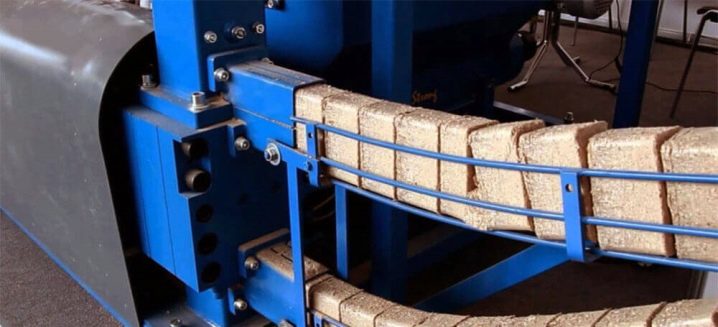
Device and principle of operation
The sawdust briquette machine has several main components in its design. First, the raw material should be thoroughly dried, after which it should be crushed into small fractions of approximately the same caliber. The final stage in the creation of fuel briquettes will be their pressing. If the volume of work is not too large, then it will be enough to use only a press machine.
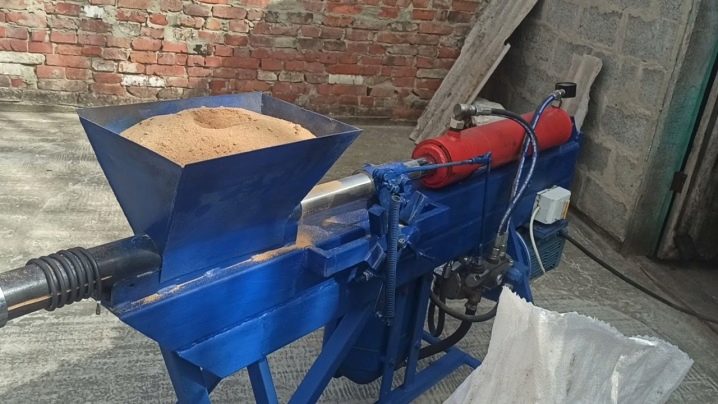
A device such as a hydraulic jack, which for this purpose is specially fixed to a support-type frame, can cope with such a task much better. Moreover, its direction is exclusively downward. A form is fixed under the jack, which is filled with material.
In order for the final product to obtain the required appearance, a special nozzle must be created and installed for the stock, which will exactly repeat the shape of the pellet container.

But such a mini-machine for making briquettes from sawdust at home has some disadvantages:
- rather low productivity - only 1 product can be created in 1 full working cycle;
- inhomogeneity of material density - the reason lies in the fact that the hydraulic jack cannot evenly distribute the pressure throughout the material that is in the mold.
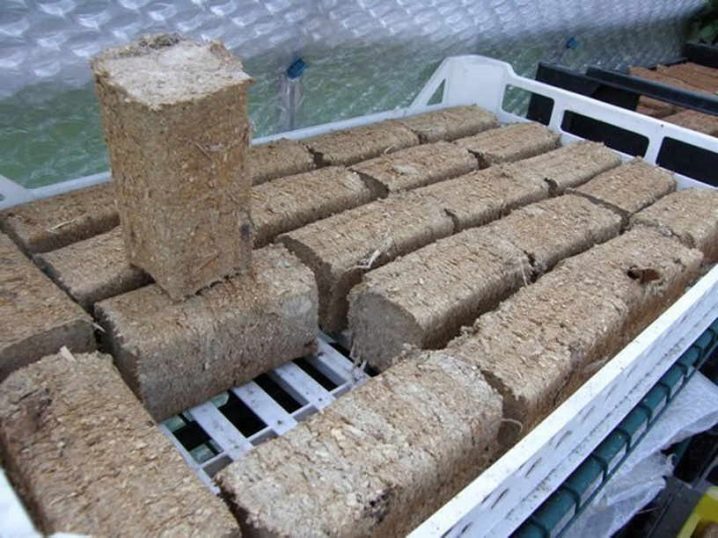
But if you want to get a full range of devices for making fuel briquettes from coal or sawdust at home, then you will also need to acquire additional devices.
- A device for calibrating raw materials. Its application allows large parts to be screened onto the crusher. After that, the starting material should be well dried. By the way, the percentage of moisture content of the material will be the most important characteristic that allows you to get really high-quality briquettes.
- Dispersants. It is they who carry out the drying through the use of hot smoke.
- Press. They are used for briquetting. The bottom line is that the bar is divided into parts using a knife located inside the press.
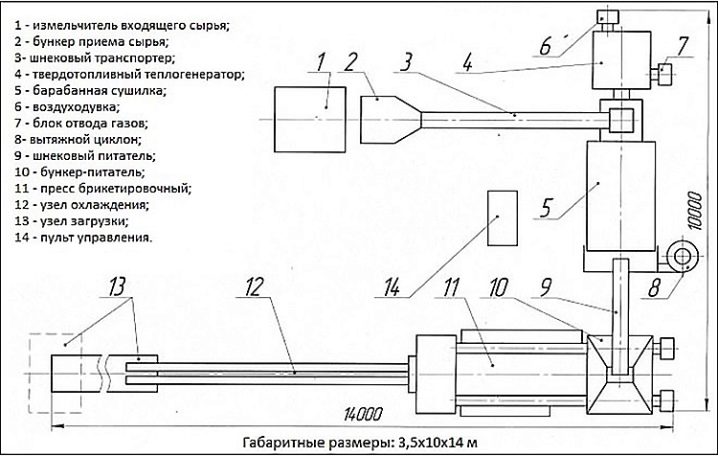
Besides, the device is equipped with special temperature sensors... It should be noted here that the constituent elements of the fuel briquette are bound by a special substance called "lignin". A feature is that its release occurs exclusively when exposed to high pressure and temperature.
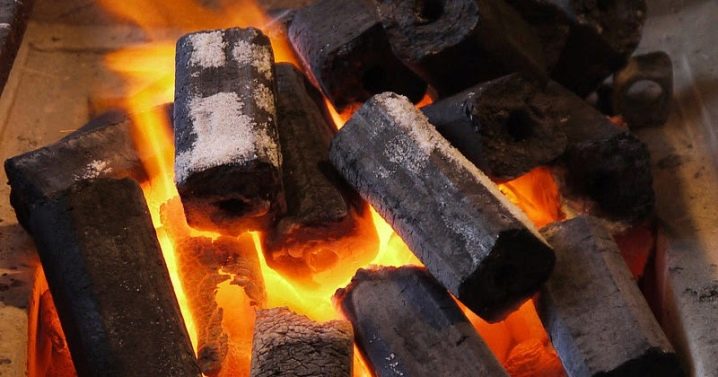
Often, even a mini-machine for making briquettes from sawdust at home has the following elements:
- hopper for accumulating material, equipped with a turner and metering mechanism;
- conveyors that allow the supply of raw material to the drying chamber;
- magnets that capture and subsequently extract various metal-based impurities from the materials;
- a sorter that performs functions thanks to vibration;
- an automatic machine for packing the received briquettes.
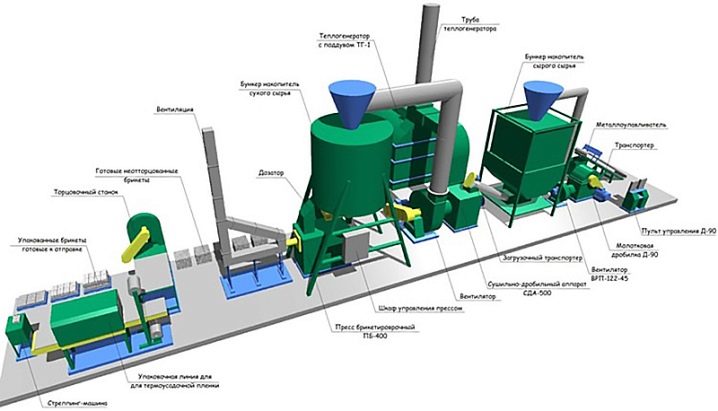
Species overview
It must be said that the main equipment for creating briquettes, pellets and Euro wood can differ depending on the used drive, the principle of operation, and also the design. In the simplest version of machines for making briquettes at home from coal, a home-made press can be used, which is equipped with one of 3 types of drive:
- screw;
- lever;
- hydraulic.
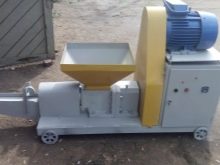
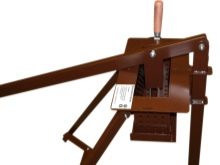
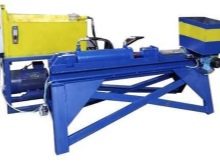
When it comes to the industrial production of briquettes, extruder machines are usually used. That is, there are 2 main categories of equipment:
- manual;
- extruder.
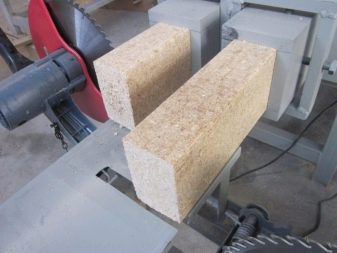
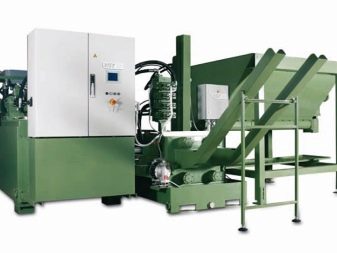
The first category is usually used to create a small number of briquettes for their needs. As mentioned, usually such a mini-machine is driven by one of the above mechanisms. The basis of such equipment will be a frame on which the following components are fixed:
- a matrix, which is usually created using a pipe with thick walls of a certain size;
- a punch, which is made from a thin sheet of metal (a pipe is usually attached to it by welding, which will play the role of a rod);
- a mixing drum, which can be created from a large-diameter pipe or sheet metal by making a cylinder with certain dimensions;
- a drive mechanism, which can be a screw with a handle, a lever or a hydraulic type jack for a car;
- containers for loading material and unloading products.


If we talk about the principle of operation of such a machine, then first the raw material, which is mixed with the binder in the drum, is fed into the matrix chamber, where the punch exerts pressure on it.
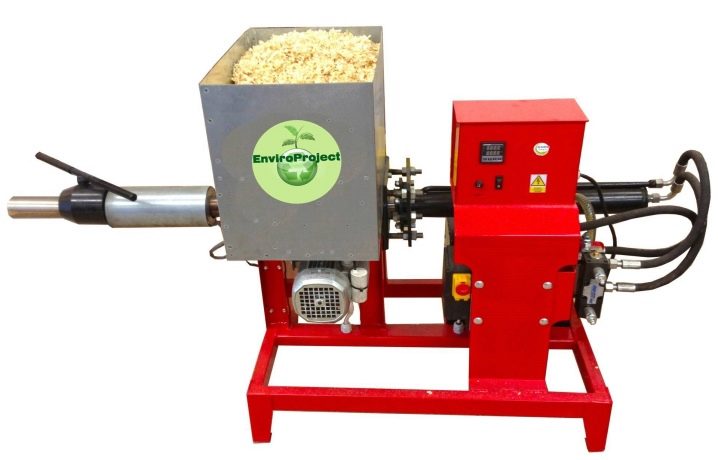
When a briquette is created, it is discharged through the lower die area, which is specially equipped with an opening bottom.
Then it is required to dry the resulting briquettes on the street or in the oven, after which they are used for their intended purpose.
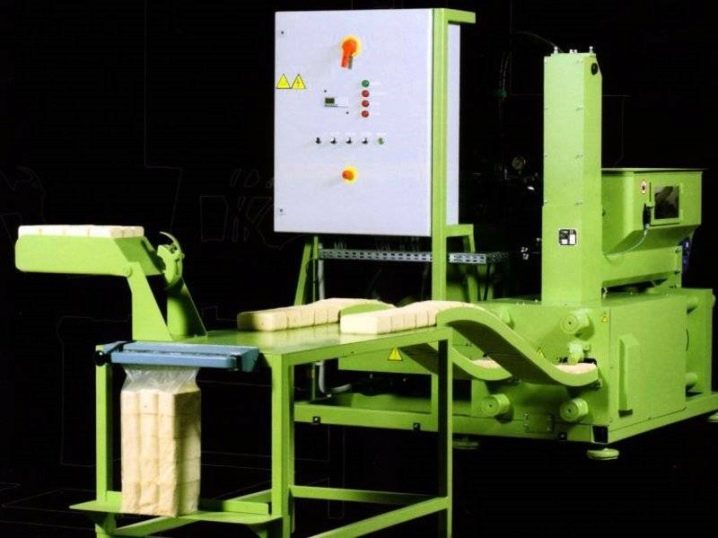
If we talk about machines of an extruder nature, which are usually used in production, then their principle of operation will be as follows:
- the raw material supplied to the working container is captured by a screw that rotates and then transported to the holes in the matrix;
- when pushed through these holes under high pressure, granules are obtained from the raw materials, which are distinguished by a very dense internal structure.
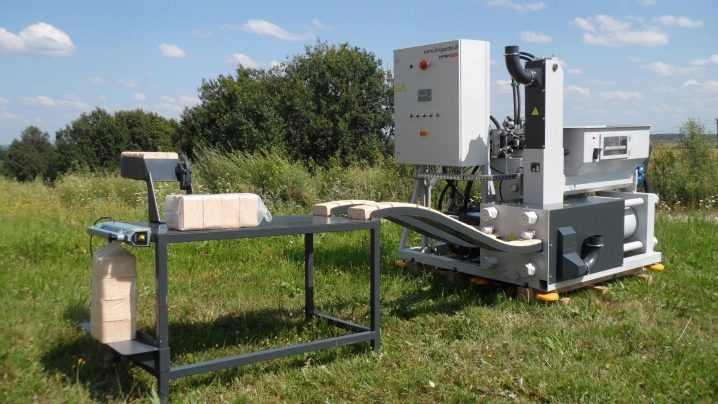
When using such machines, no binders are added to the raw materials to create briquettes, because the pressure generated by the equipment is more than enough to separate lignin from the sawdust mass. After creating fuel pellets on such equipment, it is required to allow them to cool, after which they need to be dried and packaged.

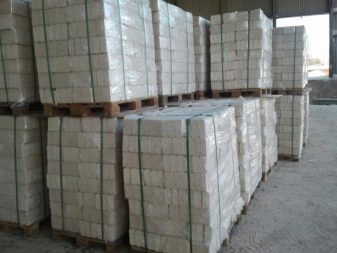
Selection Tips
If it was decided to purchase production equipment for briquetting dust or creating fuel briquettes from various materials, then first you need to prepare suitable areas for placing all the equipment.
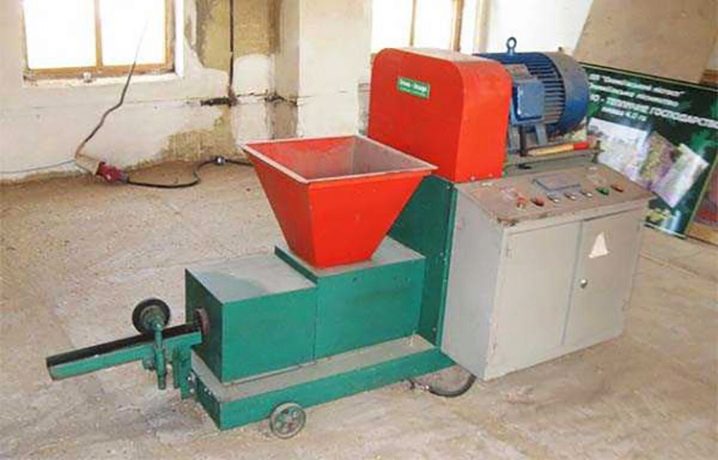
In addition, when choosing machines, one should take into account the dimensions of these rooms, as well as the following points:
- availability of suitable sources of electrical energy for the uninterrupted operation of the equipment;
- availability of access roads for the delivery of large volumes of raw materials;
- availability of a sewerage and water supply system, which will provide the production line with a source of water and the possibility of cleaning production waste;
- availability of the necessary raw materials.
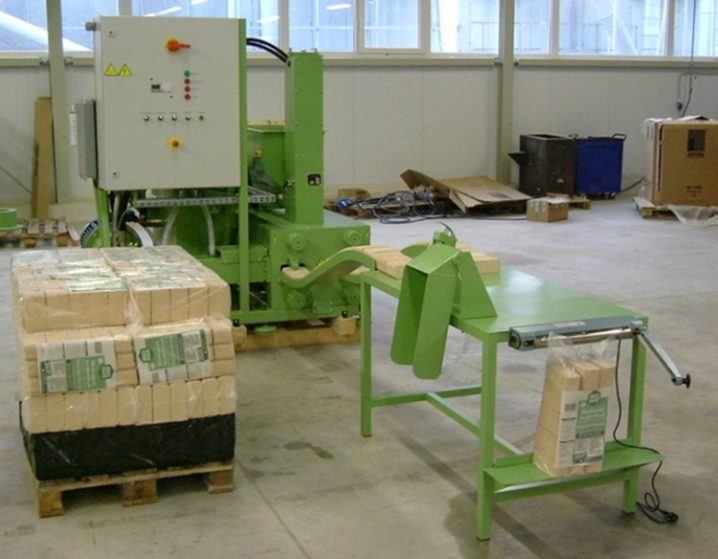
If we talk about the equipment itself, then its choice must be made taking into account the understanding of where exactly it will be possible to get the raw material, as well as depending on its volume. In addition, one should not forget about the fire safety requirements. Separately, it is required to add that the equipment should be productive, as economical as possible and ensure the release of really high-quality products that will be highly efficient and affordable.
It is best to give preference to equipment that is made by well-known companies and manufacturers with a good reputation in the market.
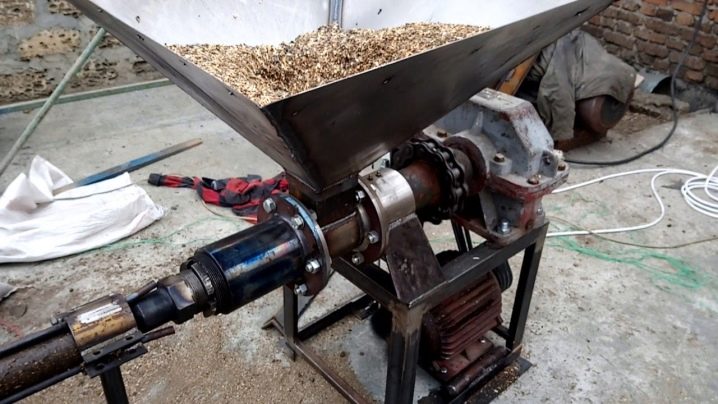
Functionality will also be an important point. Each parameter and characteristic must be customizable. Moreover, it is important that the setup is as simple and convenient as possible.
What kind of raw materials are used?
If we talk about raw materials for coal or any other types of fuel briquettes, then they can be literally any waste of a vegetable nature.
We are talking not only about sawdust, but also about hay, straw, dry parts of corn stalks and even ordinary vegetable waste, which, in principle, can be found on the territory of any private house.
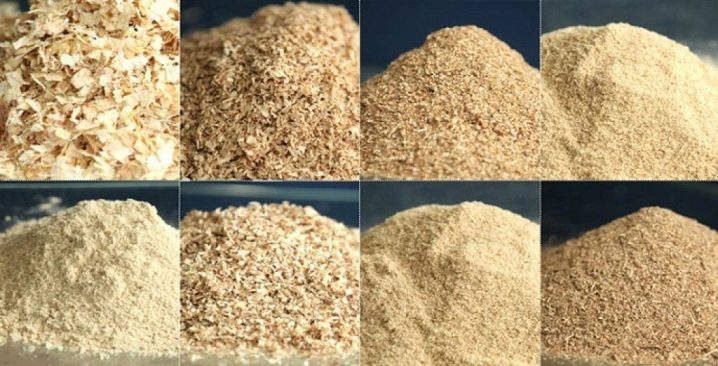
Besides, you will need to have ordinary clay and water on hand. These elements make it possible to press and glue the raw materials perfectly. The clay also provides a long burning time for the resulting fuel. If the fire is strong, then 1 briquette can burn for about 60 minutes.

Fuel briquettes made of paper are quite popular today. They burn well and give off a lot of heat with little ash residue after burning. If there is a lot of this material in the house, then you can independently make fuel briquettes from it.
This will require:
- have the right amount of paper on hand;
- grind it into the smallest possible pieces;
- soak the resulting pieces in water at room temperature and wait until the mass is liquid and homogeneous;
- drain the remaining liquid, and distribute the resulting mixture into forms;
- after all the water has evaporated from the mass, it will need to be removed from the mold and taken out to dry in fresh air.

You can add a little starch to the soaked paper for a better effect. In addition, paper is used for the production of sawdust briquettes, where it is a binder for everything.
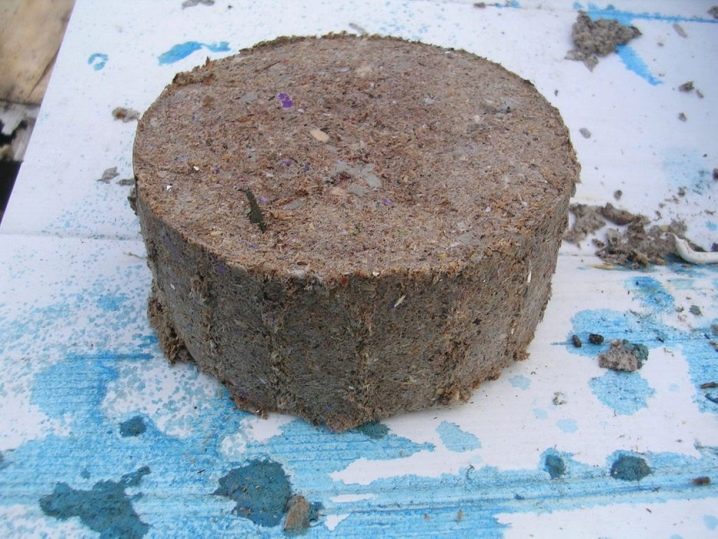













The comment was sent successfully.